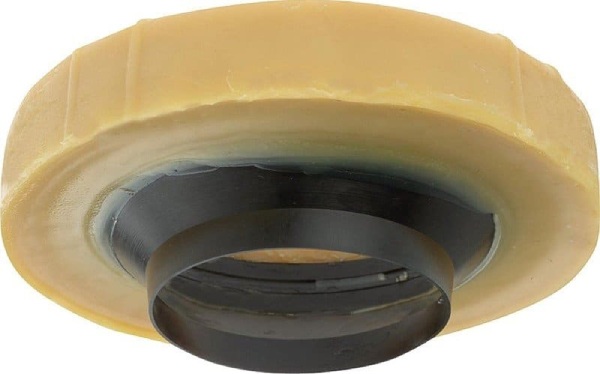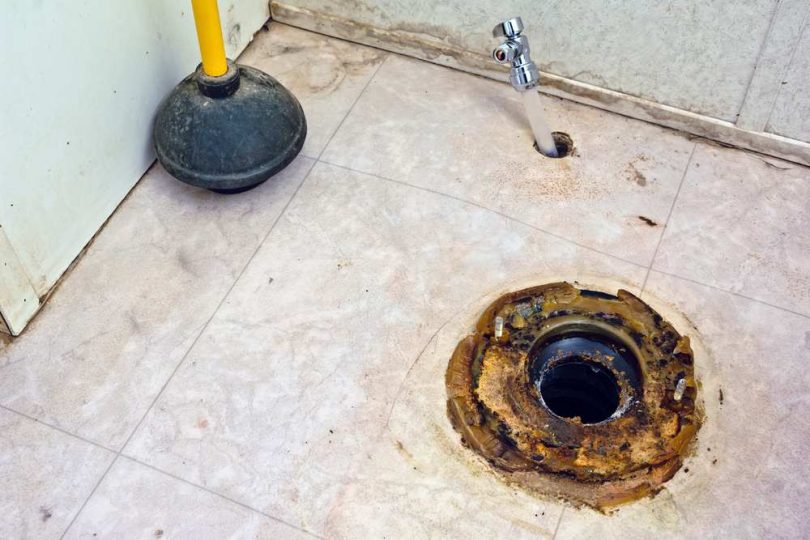As the name implies, these rings are made of wax. Many people are unaware that some things we do can damage the rings.
Even though plunging your toilet may not damage the ring every time you try this, the worst can happen when done incorrectly.
What Is a Wax Ring?

There are small rings molded on a small plastic pipe to create a watertight seal around the drain pipe and bottom of the toilet. In recent years, wax rings have proven to be a poor alternative to rubber gasket seals.
The flange of the toilet is fitted with a ring, and then it’s mounted on top of the flange. Both sides of the toilet have bolts that firmly secure it to the floor and force it against the ring, making it watertight.
Can Plunging A Toilet Damage the Wax Ring?
Yes, there is a possibility!
These rings are made in the shape of a circle. Rings are physically stronger from the outside than they are from the inside.
When you push towards the middle, you only compress the ring. However, it is stretched when you pull it outward and can quickly be damaged.
The retrieval power of wax is much lower than that of rubber, and its resistance is much lower than that of metals and foam. Essentially, plunging damages the ring by forcing it outwards.
Each time you plunge into the ring, you pull and push on it. It will simply need to be replaced.
Signs You Have Damaged the Ring When Plunging
1. Water around the toilet
When water forms around the toilet base, this is the first sign of a bad toilet ring.
If you suspect a bad seal, wipe up the water with a couple of towels. Then check periodically to see if the water is returning throughout the day.
Get a plumber to perform a further inspection if necessary. Do not ignore the water at the bottom of the toilet if you have it.
2. Bad odor coming from the loo
The sewer gas that you smell is likely to be sewer gas that has passed the ring. It is harmful to breathe sewer gas. In addition to making people sick, these gasses may explode in the presence of an open flame.
3. Ceiling or floor damage
Where there is a bathroom directly above a damaged ceiling, have you noticed mold or other signs of disrepair? Water won’t leak from the base of the toilet if it’s caulked during installation when you have a bad wax ring.
The flooring around the toilet usually suffers damage in cases like this. Water that isn’t visible isn’t necessarily harmless. Leaks from the toilet that reach the floor or ceiling can result in severe damage, leading to the toilet falling through the ceiling.
The Right Way to Plunge to Avoid Damaging the Ring
The good news is that you can unclog a toilet with a plunger even if there are chances that it will cause damage. In order to lower the possibility of damage, you must do it correctly.
In order to avoid damaging the ring, try to dislodge the clog before trying to force it downward. The procedure is as follows:
Step 1:
Place the bulb of the plunger on the bowl’s side so that the surface of the bulb stirs the water surface.
Step 2:
Then, you softly push it downward. There is no force exerted on the ring as the pushing is going against the inside of the bowl instead of the drainpipe where the ring is located.
Step 3:
Slide the plunger’s bulb down so it’s in the bowl a the bottom, then lift it with a jerking movement.
Step 4:
It is pushed along the wall of the toilet, not into the drain. When it has gained suction power, simply lift it from the bowl opening when it has gained enough suction power.
As a result, the force applied to the ring moves toward the center. The ring will not be damaged. Do this until you are able to clear the clog completely.
Easy Plunging Tips
- Make sure there is a good water level in the bowl to create good water pressure for the blockage
- Plunge with a swift movement so the air can be removed easily
- Once the air has been removed, plunge outwards and inwards to dislodge the clog rather than forcing in downwards
How to Work Without the Plunge?
Dish soap, bar soap, or shampoo
Shampoo or soap can lubricate the clogs in the toilet and make it easy to flush them down the drain.
Baking soda and white vinegar
Vinegar and baking soda can effectively break down clogged substances and clear the way. You can use them repeatedly until the clog is gone.
You just need to mix 1 tablespoon of baking soda with a cup of vinegar and apply it to the toilet bowl.
Wire hanger
You can use a wire-made cloth hanger to unclog the toilet. Cut the hanger and insert it into your toilet pipe and push and pull it to clear the clog.
Epsom salts
You can use Epsom salt to unclog your toilet as this salt is a great softener. Just add some salt to the toilet bowl and keep it for at least an hour so that the salt can soften the clog. Then flush the toilet to clean it.
Toilet auger
A toilet auger or a toilet snake can effectively break down the hard clogs. You can do it by inserting the auger into the pipe through the bowl and turning it on when you feel obstacles. After breaking down the clog, flush your toilet to clean the line.
Hot water
You can use hot water to unclog your toilet as hot water can also soften the clogging material. Just pour hot water into the toilet bowl and wait for 20 minutes. Remember not to use boiling water as it can crack the porcelain-made toilets.
Bleach
You can mix bleach and powdered dish detergent to soften the clog. For making the process more effective add warm water to the mixture.
FAQs
1. Are toilet rings expensive to replace?
Ans. The ring itself is inexpensive, costing between $2.00 to $10.00. It is the installation that can cost a lot, anywhere from $100 to $400.
2. How long do toilet wax rings cost?
Ans. Given you use your plunger correctly, you can expect to get 20-30 years out of your toilet ring.








Leave a Comment